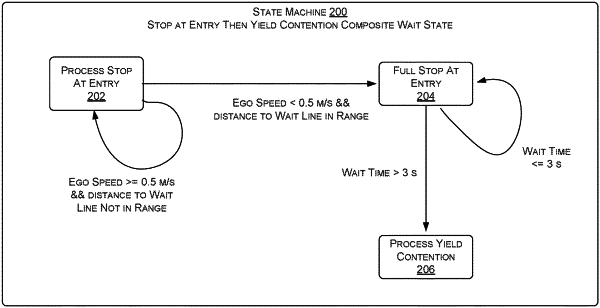| CPC B60W 60/0027 (2020.02) [B60W 30/18154 (2013.01); B60W 30/18159 (2020.02); G08G 1/096725 (2013.01); B60W 2420/42 (2013.01); B60W 2420/52 (2013.01); B60W 2552/05 (2020.02)] | 20 Claims |

|
1. A method comprising:
identifying a scenario for a first vehicle based at least on analyzing sensor data generated using at least one sensor of the first vehicle in an environment;
determining based at least on the scenario, a first path for the first vehicle to traverse an area in the environment, a second path for a second vehicle to traverse the area, and a wait state corresponding to a state machine including at least a first state and a second state that correspond to respective categories of yield behavior for controlling the first vehicle with respect to one or more contention points between the first path and the second path;
determining, from the first path, a first trajectory that satisfies the respective categories of yield behavior represented by the wait state in the area based at least on a first location of the first vehicle at a time;
determining, from the second path, a second trajectory in the area for the second vehicle based at least on a second location of the second vehicle at the time;
evaluating whether there is a conflict between the first trajectory and the second trajectory;
selecting the wait state for the first vehicle based at least on the evaluating; and
based at least on the selecting of the wait state, controlling the first vehicle to traverse the area using the wait state.
|